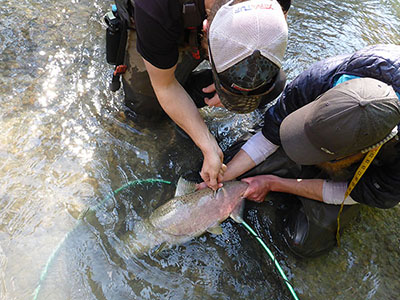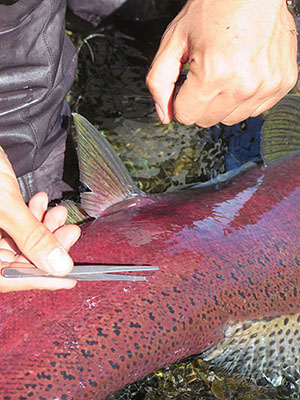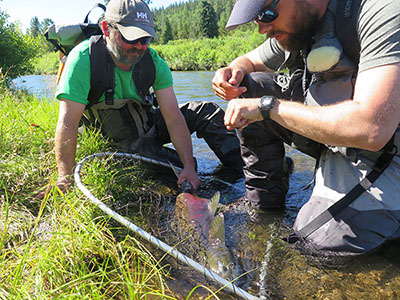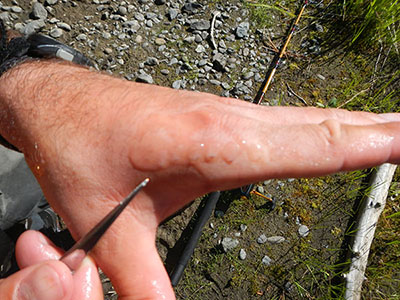Collection and Preparation
Last modified on Jan 21, 2021
Scale sampling
Chinook salmon scales are collected to estimate the age of individual fish, and the combined age data of many individuals are used to construct age compositions and brood tables that help inform management. In particular, brood year return data and associated trends are important components of pre-season forecast models (e.g., sibling models) and brood year productivity data are used in models that inform spawning escapement goals (e.g., Ricker spawner-recruitment models). Age data are also used to evaluate the biological characteristics of stocks, such as potential changes in age composition over time due to ecological, environmental, or anthropogenic factors. Salmon scales are sampled from different harvest methods and projects, including from subsistence, personal use, commercial, and sport fisheries and from research projects, such as at weirs. An individual sample may consist of fish caught during a commercial fishery opening from one area of the marine environment, while other samples of the same stock might consist of fish caught by subsistence fishers on a river, or at a weir.
To provide the best possible age estimates, scales should be sampled so that they are (1) representative of the entire population, and (2) legible and therefore usable for age estimation. Here, we present some methods for sampling Chinook salmon scales, and we invite other viewpoints to contribute to the conversation.




